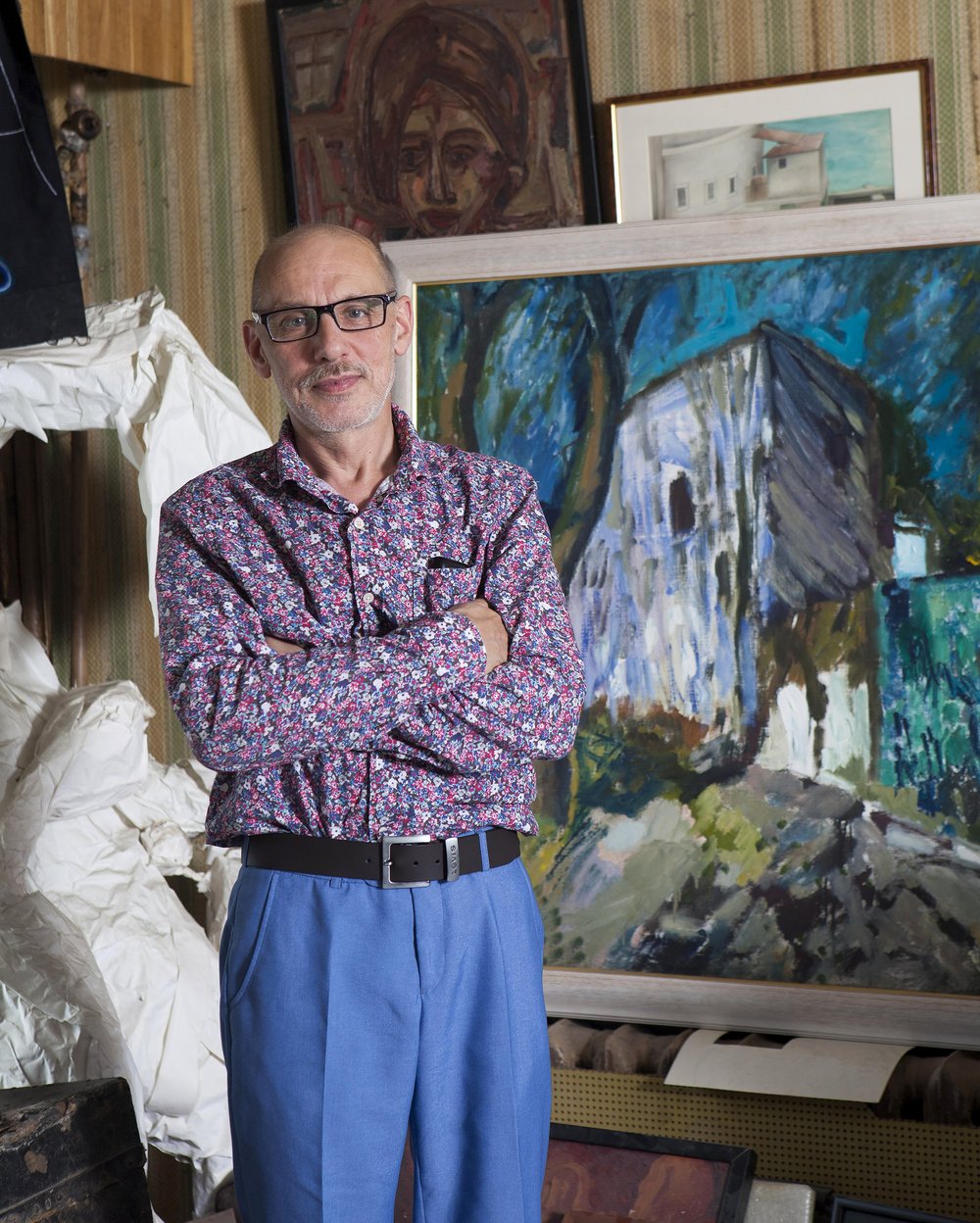Mikhail Alshibaya: The surgeon’s art, and a mission to preserve the past

Mikhail Alshibaya. Photo by Elena Rostunova
One of Russia’s most original and intriguing art collectors is the leading heart surgeon Mikhail Alshibaya, who seems far more interested in the story behind objects than in what the artists actually created.
Obsessed with death, he researches the lives of obscure and long-dead Soviet artists in a quest for their untold stories.
His greatest problem is space, and his collection is spread over several sites — including a museum in one of Moscow’s universities, his flat and a number of crammed attics. His studio is in a state of constant chaos, and the collector sits in one of the few free corners, picking through a pile of objects to find the one that tells the story of a long-forgotten past.
What Alshibaya thrusts forward first is a newly framed painting of a street scene. “This is the last surviving work by Nadezhda Mandelstam,” he says gleefully. “She has signed it on the back with her maiden name, Nadezhda Yakovlena Khazina. It was painted in Kiev in the spring of 1918. You can see the season from the colour of the trees. She was working in the studio of (Avant-Gardist) Aleksandra Exter (1882-1949), which had received a visit that May from Osip Mandelstam (1891-1938), who had come down to Kiev with a Soviet delegation. They married and after Mandelstam’s death, she decided to memorise all his poetry in case the regime should destroy his work. In order to concentrate on remembering his poems, she destroyed all her own artwork.” What fascinates the collector is precisely this kind of unexpected fragment which can bring a lost era back to life.
Another painting — one of whose corners is missing — is a work by the late Natalia Kasatkina. She was one of several Soviet artists whose works were selected by the French communist poet Louis Aragon (1897-1982) for a 1957 issue of the French periodical “Lettres Francaises,” to show that the Socialist Realism style imposed by Stalin was no longer compulsory.
Many years later, an acquaintance told Alshibaya that a French poet had written about a group of Soviet artists in the 1950s. Despite the lack of details, Alshibaya not only tracked down a copy of the French publication, but also acquired two of the paintings Aragon used to illustrate the article, including one by Kasatkina. He wants to include her story in a new exhibition that will open in Moscow in May 2019 — his 51st since he started showing his collection in 2004.
Alshibaya’s deep respect for the past is reflected in a permanent exhibition of part of his collection in the museum area of Moscow’s Russian State Humanitarian University. That space was previously occupied by the collection of Leonid Talochkin (1936-2002), a man who helped Alshibaya navigate through the world of Soviet collectors when the heart surgeon was making his first steps. After his death, Talochkin’s widow donated her husband’s collection to Moscow’s Tretyakov Gallery. It was replaced by part of Alshibaya’s and the surgeon deliberately left echoes of his predecessor throughout the two halls of the exhibition.
For instance, one of Talochkin’s totemic items transferred to the Tretyakov was a wooden door painted red by Mikhail Roginsky (1931-2004), made in Moscow before he emigrated to France. Upon taking over the same space, Alshibaya placed another version of “Red Door,” which he happened to own, exactly where the original one had hung in Talochkin’s day.
First in Imperial Russia and later in Soviet times, many doctors became collectors because their artistic patients tended to reward them in kind. In this tradition, medicine also set Alshibaya on the collector’s path, but in a different way.
He was first bitten in 1982 when he made a professional call to yet another major Russian collector, Jacob Rubinstein (1900-1983). Russian Avant-Garde paintings hung wall-to-wall in Rubinstein’s flat. The discovery first turned Alshibaya into a hunter of art books, which were hard to get and expensive at the time. However, he only made his first purchase in the mid-1980s, when he bought an abstract painting at Moscow’s Izmailovo market — then one of the few commercial outlets used by contemporary artists. He has by now lost count of how many art works he has amassed, but says they number at least 6,000.














